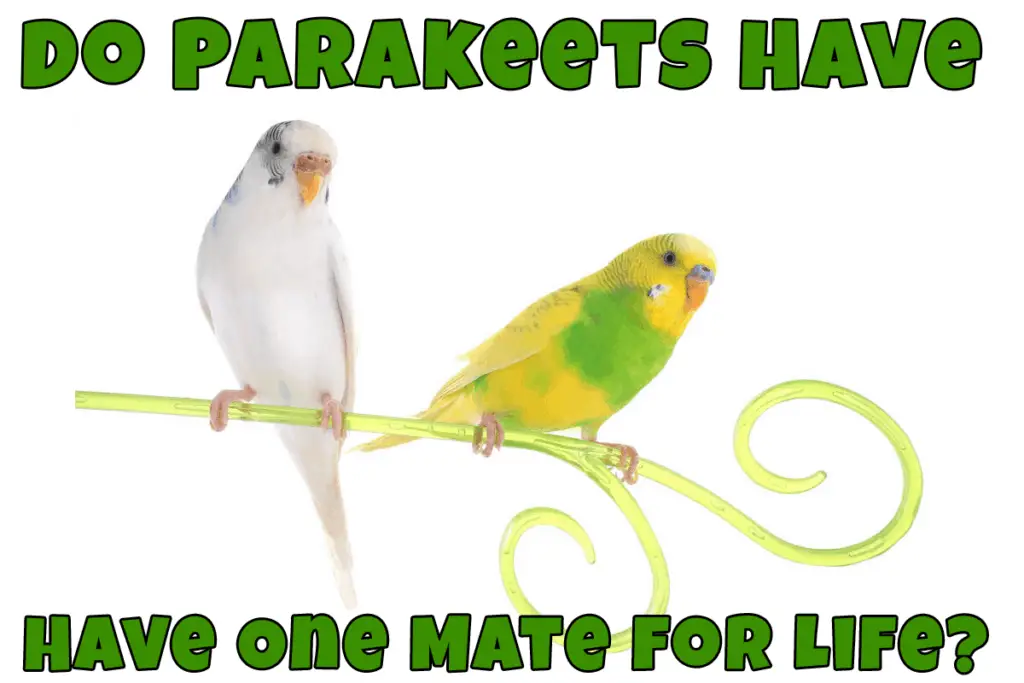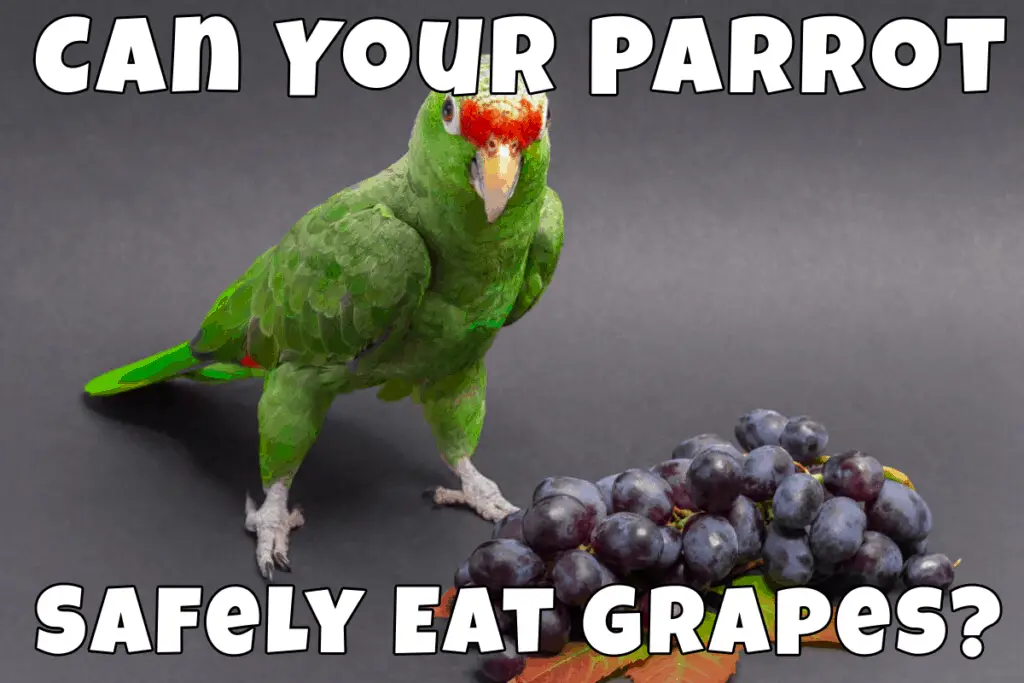As a pet owner, it’s your responsibility to take care of its health. Yes, in the wild, parrots regulate their habits and lifestyle on their own, but captivity-bred birds often lack the skills and experience. Thus, the owner should control all aspects of the bird’s life. And one of the most important parts of being a pet parent is keeping their diet healthy and appropriate. And not overfeed the pet no matter how cute they ask for the treats.
Parakeets can overeat, though that happens only when an owner is too indulgent. For parrots, overeating may lead to severe issues starting from obesity to cardiovascular diseases and even diabetes in rare cases. Thus, you should keep track of your parrot’s weight and do regular checkups with the vet clinic.
On most occasions, overeating is just the owner giving the pet too much food. In some cases, the problem lies in the quality of the diet (a.k.a. products chosen). However, there are some rare cases when disturbed eating habits are caused by depression, nutrient deficiencies, and other illnesses.
You need to pay close attention to the bird’s behavior and thoroughly study the foods you give the pet.
Let’s take a look at a parakeet’s diet and how much is too much.
How to Tell If a Parakeet Is Overweight?
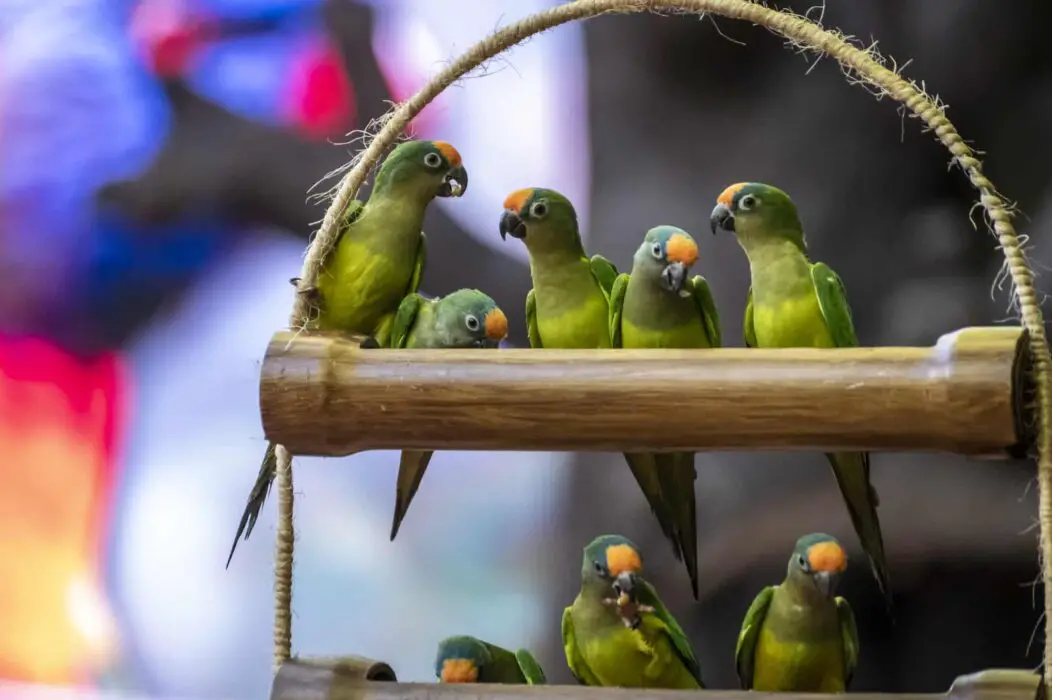
A round parakeet is an obese parakeet. That is easy enough to determine. Chubby may be cute but not healthy for a bird. However, there are sure signs that you can catch before your bird becomes a round ball before the harm is done.
It’s easy to see the keel of a healthy bird. This is the center bone of a parrot that runs along its body. You should be able to see it from the front. However, that also depends on its size and breed. For some birds, it’s natural. But parakeets usually display it.
Keep track of the bird’s weight and take pictures. Usually, parakeets gain most of their weight in the initial eight months of their life. After that, the weight shouldn’t fluctuate too much. As you weigh your bird, you can check the results with the numerous tables of standard parakeet measurements for different ages. If your bird’s weight exceeds the recommended, you better call your vet for a consultation.
Do Parakeets Eat Watermelon? Is It Safe?
How Dangerous Is Overeating for Parakeets?
Obesity may lead to several medical conditions as well as lethargy. One of the biggest issues to worry about is fatty liver disease, a common issue for parrots. Watch out for the symptoms:
- black dots on the beak and toes
- bleeding
- beak growth
- yellow bluish feathers (if not the natural coloring of your bird)
The condition is as it sounds – fatty cells replace the healthy natural cells of the bird’s liver. The condition is serious and should be treated asap to prevent shortening your pet’s lifespan.
What Foods to Avoid?
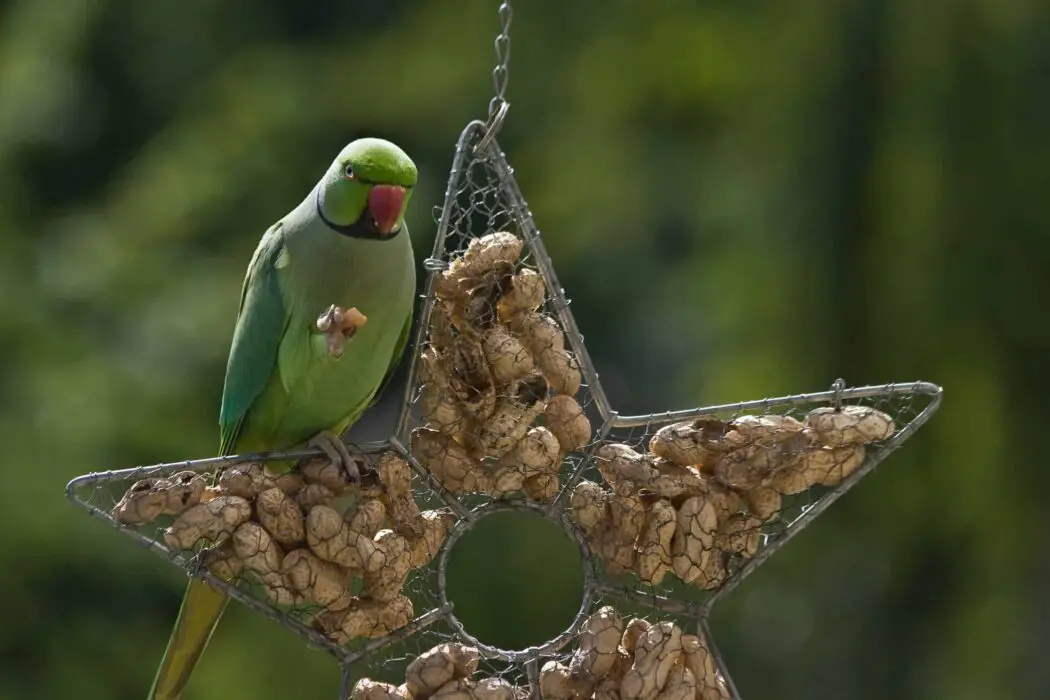
A parrot’s diet consists of specialized parrot pellets, greens, vegetables, a bit of fruit, seeds, and nuts. The biggest part should go to pellets – around 60-70%. Then, fill the rest with low-calorie greens and vegetables. Seeds and nuts are healthy foods for parrots (for the most part) and highly nutritious but should be limited due to their high-calorie load. I always make fruit into rare tasty treats, especially something high-calorie and sugar intense as bananas. As I mentioned in my previous article, parakeets can eat bananas but not daily. The same concerns fatty nuts and seeds.
Also, remember that parrot pellets are a base, not the only food. They are high in calories and carbs needed for the birds and should be complemented by fresh greens and vegetables with lots of nutrients and few calories. Such useful products will keep your bird sated and full.
Do Parakeets Grieve Over Lost Partners?
Besides, overusing one product type (especially the tasty yet fat) may result in the refusal to eat something tastier. E.g., you’ve been treating your parrot with a fatty seed mix and fruits for several days. Do you think your bird will want to switch to pellets and vegetables later? I don’t think so.
Suppose your parakeet is already on such an unhealthy diet. Start replacing foods with healthier ones gradually. And don’t up. If your bird doesn’t eat the pellet for five minutes, don’t be soft and give it nuts. Be patient and strict.
Also, parrots have a fast metabolism and would benefit significantly from smaller but more frequent servings. This way, they’ll keep their eating habits healthier.
What About Parakeet Exercises?
With my birds, I always prefer to give them several hours a day of “outside the cage” time. Even if I have tiny parakeets in a huge cage. They won’t be as active inside as outside, preferably playing with the family and specialized toys.
With that, though, of course, you have to give your parrot a big enough cage. A few hours of flying outside do not compensate for a tiny cage where a bird can’t even stretch its wings.
How Often to Feed Parakeets?
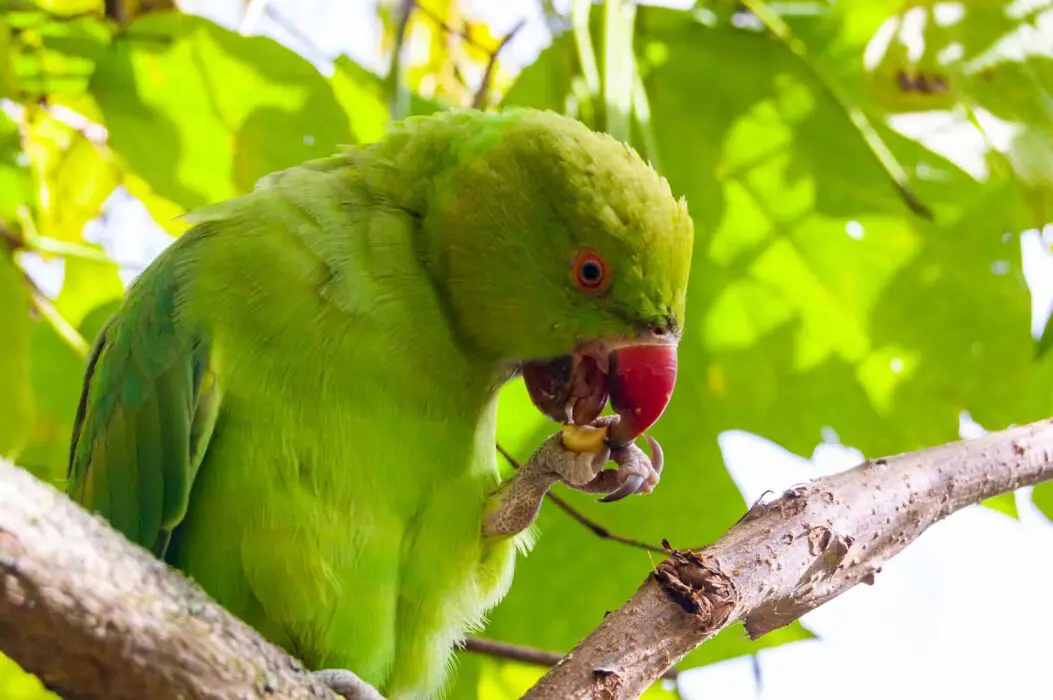
Newborn parrots should eat often to grow properly, around 3 to 5 times a day. As the parrot grows, decrease the number of feeds to two times a day. Early in the morning and late afternoon/early evening should be the best as such a schedule mimics their habits in the wild. I a bird is young, I also tend to add a teeny-tiny low-calorie treat during playtime, preferably a small piece of greens or veggies. I also make sure the bird doesn’t eat at least an hour before its bedtime!
To develop healthy eating habits, you should give your parrot food at the same time each day. This way, it gets used to the schedule and won’t overeat next time!
What Can Parakeets Eat? Full Diet Review
In Conclusion
Overall, overeating is an issue that’s mainly caused by parakeet owners. On its own, the bird doesn’t have the cravings for binging like people do (Netflix, chill, and chips!). Thus, you can easily prevent your bird from obesity by creating healthy eating habits for it and choosing the right foods.
I advise checking all the new foods you decide to give your bid for safety and calorie/nutrient composition.

